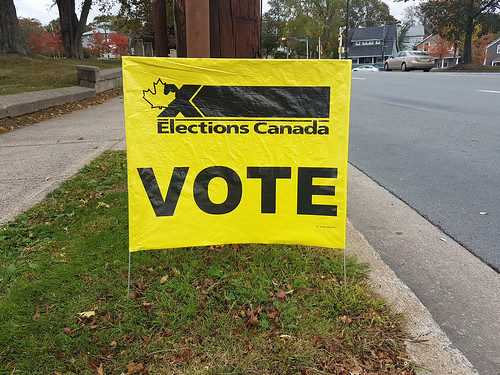2019. The Canadian Federal Election year. This is when you see campaigns from potential candidates who are running for a party with hopes to win and be the party in power. People watch these campaigns like hawks, analyzing what every party says where voters will then make a (hopefully) informed decision on which party they will vote for. The voters will then make their way to the voting station where they are registered to vote and go behind the voting screen and place a nice X for the party they are voting for on their ballot. From here, the ballots are counted and the party with the most votes in a riding wins and the party with the most wins in all the ridings becomes the party in charge. Pretty simple, right? Heck to the no. Politics are much more complicated than that. Similarly, the curriculum and politics are complicated.

To begin, it would be helpful to read, “Curriculum Policy and the Politics of What Should Be Learned in Schools,” written by Ben Levin. Levin introduces the curriculum as “an official statement of what students are expected to know and be able to do,” (pg. 8). Basically, this means that if in the Grade 1 curriculum it states that children should be able to do simple addition, then the children are expected to do so. According to Levin, the school curriculum is developed by the government. But it is not just the government whose voice is being heard in the decision-making factors. The government listens to their voters and decides curriculum based off of what the majority of the population deems essential for students to learn. Levin writes, “in every setting, from classroom to country, political influence is usually highly unequal, and those who have the least status tend also to have the least influence on political decision making,” (pg. 8). Aside from the majority of the population having an influence on curriculum, Levan goes onto to explain curriculum is also a product created from the media and events. It is written, “The significance of the media is also illustrated by the consistent finding that where people have first-hand knowledge…where their prime source of information may come through often negative media coverage,” (pg. 11) meaning if the media covers a story about the curriculum where the curriculum appears negatively, the curriculum may be changed so stories about this negative curriculum disappear. Then, when it comes to the implementation of the curriculum, changes that were made, may not be checked to see if they are successful or failures (Levan, pg. 12).
Another perspective from the development and implementation of the school curriculum is that secondary teachers and elementary teachers are on two different pages. This is interesting as Levin writes throughout his article how the two levels of teachers differ from what they deem important. Another perspective about curriculum comes from business’. Yes, I too am surprised about this. Levan writes “business groups often have strong views about various aspects of secondary curriculum…,” (pg.16). This means the businesses which may be very strong in a certain province, can help determine the curriculum. For instance, in Saskatchewan, Potash Corp is very well-known, do you think they have an influence on the curriculum? Is this why we learn so much about resources and the ground??? One area of concern with regards to the curriculum is the notion that an expert in a certain subject creates the curriculum and then teachers who may not be knowledgeable about that subject are expected to teach this. Is this fair to teachers? Are there enough curriculum resources for those teachers so they can reach every outcome and indicator???

With this, we were urged to look at the Treaty Education Outcomes and Indicators created by the Saskatchewan Ministry of Education. After much examination, one can easily notice the Government thinks it is necessary for students to learn Treaty Ed as “The Constitution of Canada recognizes and affirms the existing treaty rights of the First Nations peoples and the Aboriginal rights of Metis people in Canada,” (Treaty Education Outcomes and Indicators, pg. 3). However, in Levan’s article and mentioned above, many areas of curriculum say an expert usually creates the curriculum for a particular subject area, whereas this document by the Government does not use experts in the creation of the document. Also, one can easily tell from the curriculum document that the government implemented Treaty Ed since it deemed it important which echoes similar points to Levin’s article. In the end, the Treaty Education document still needs improving as many teachers still do not teach Treaty Ed but to learn about that, read my last blog post.
Now as I leave you, what do you think would help create a neutral curriculum? Or will a neutral curriculum with no influences ever happen? Is there such a thing as a neutral curriculum?
Until next time,
Jayden
